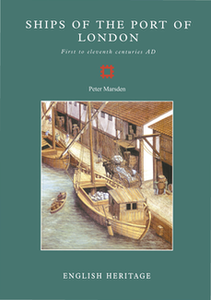English Heritage Archaeological Monographs
English Heritage, 2014. https://doi.org/10.5284/1028203. How to cite using this DOI
Data copyright © English Heritage unless otherwise stated
This work is licensed under the ADS Terms of Use and Access.
Primary contact
Historic England
The Engine House
Firefly Avenue
Swindon
SN2 2EH
Resource identifiers
- ADS Collection: 1416
- DOI:https://doi.org/10.5284/1028203
- How to cite using this DOI
Ships of the Port of London: First to eleventh centuries AD
Marsden, P.
English Heritage (1994)
Abstract:

This report is the first full study of the remains of ships and boats used in the port of London from the first to the eleventh century AD. Using evidence from the vessels, from the waterfronts, and from trade goods, Peter Marsden has reconstructed the design and use of these ancient ships, and brought together for the first time the accumulated evidence of over 30 years of archaeological research. The remains of three substantial vessels are discussed: Blackfriars ship 1, the earliest-known seagoing sailing ship yet found in northern Europe, the New Guy's House boat, a river barge from the second century, and the County Hall ship, discovered in 1910 and dating from the fourth century. Using these and fragments of different types of clinker-built vessels found in the Thames the author examines the pattern of shipbuilding in northern Europe, with the conclusion that London was the meeting point for several shipbuilding traditions, of which the primary 'Roman' tradition in northern Europe was Celtic. The growth of trade, from Roman times to the fifth and sixth centuries when London was deserted, and from its renewal in the seventh century to the end of the eleventh century, is examined through the evidence of the remains of imported goods, together with the changing function of the port and the development of berthing practices.
Download monograph
| Ships of the Port of London: First to eleventh centuries AD, Marsden, P., English Heritage (1994), ISBN: 9781848022065 | 72 Mb |





